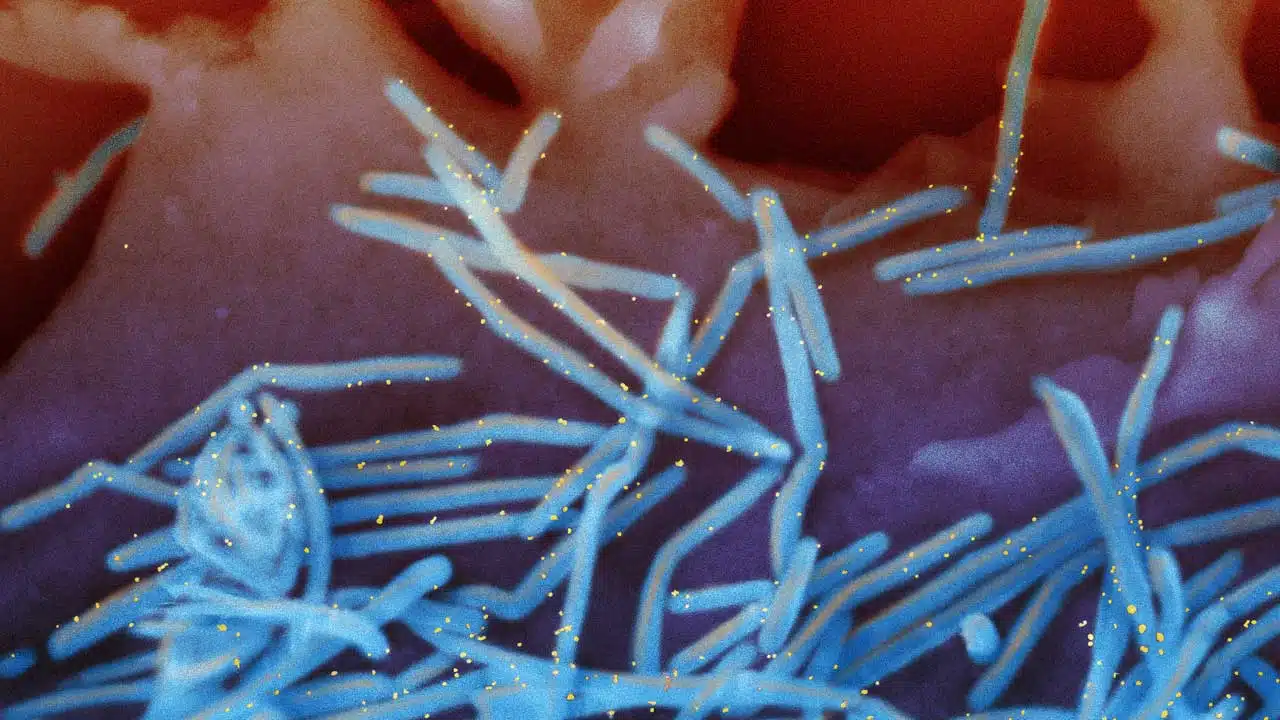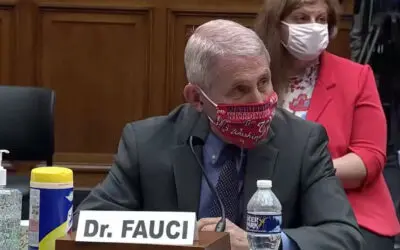Table of Contents
Introduction
I was asked by a reader to research and comment on the recent surge in respiratory syncytial virus (RSV) infections that in some areas of the country have resulted in hospitals being overwhelmed. While I do not have time to investigate this deeply to be able to confidently solve the puzzle, I can offer a few comments based on what I already know that I think will at least put us on the right track.
Immunity Debt
First, the return of common viral infections with a vengeance was a predicted outcome of the lockdown measures implemented in early 2020.
You might remember the pair of doctors in California who went public in opposition to the lockdowns in part on the grounds that the lack of routine exposure to common pathogens resulting from self-isolation would result in weakened immune systems. Coming into contact with viruses and bacteria, explained Dr. Dan Erickson and Dr. Artin Massihi during a press conference at the end of April 2020, was essential for building up immunity, which is especially true for children whose immune systems are still developing.
You might also recall how they were censored for saying that.
Now, however, that very same prediction is being cited in the mainstream discourse as an explanation for the surge in RSV and other infections.
In September of last year, for example, the BBC reported how there was an “immunity debt” built up due to the lockdown measures and particularly the school closures that “government scientists” were saying would need to be repaid.
In September of this year, a study was published in Lancet Infectious Diseases attempting to quantify the “RSV immunity debt” resulting from lockdown measures in the UK. It noted that, as predicted, there was an “unprecedented summer surge of RSV activity” in 2021, and the authors concluded that the absence of RSV during the lockdowns “probably resulted in a cohort of young children without natural immunity to RSV”. The out-of-season surge in turn resulted in a mild winter for RSV. As summarized in a commentary accompanying the study, “Out-of-season RSV resurgences are explained by decreased population immunity following a prolonged period of minimal RSV exposure, also referred to as RSV immunity debt.”
On October 26, CNN ran a piece explaining that the recent surge in RSV infections was in part due to the “immunity gap” resulting from keeping children isolated from each other during the lockdowns.
On Twitter, Dr. Monica Gandhi, an infectious disease specialist at the University of California San Francisco, cited “immunity debt” as an explanation for the recent surge in RSV infections, along with “viral interference”.
That brings me to my second point, but let me wrap up the first by noting how this is an excellent example of how a common-sense observation made by licensed medical experts was rejected as “misinformation” when that observation threatened to undermine support for the the lockdowns, even though that exact same reasoning is now accepted in the mainstream discourse as an explanation for the surge in RSV infections.
Viral Interference
Second, “viral interference” refers to the observation that viruses can actually compete with each other, so that infection with one virus can affect the ability of other viruses to infect and replicate in host cells. The predominance of SARS‑CoV‑2 infections during the pandemic appears to have resulted in a suppression of infection with other viruses.
While the disappearance of influenza and other viruses during the COVID‑19 pandemic has widely been attributed to the effects of lockdown measures, with the claim being that this shows just how effective the lockdowns were, that explanation doesn’t make much sense because the lockdowns failed to clearly mitigate the impact of COVID‑19. Why would the lockdowns almost completely stop the spread of influenza virus when they failed utterly to stop the spread of SARS‑CoV‑2?
It does make some sense in a limited context. Closing schools and otherwise isolating children would have resulted in them having less exposure to viruses typically encountered during childhood, which adults already have some level of immunity to from their own childhood. With children shut up indoors at home, this background immunity from adults in the household needing to go out and potentially becoming exposed would limit the potential for such viruses to be brought back into the home. The “immunity debt” explanation makes sense specifically for children, but not so much for the general population.
With SARS‑CoV‑2, by contrast, there was general immunological naivete among the population (apart from cellular immunity from prior infection with common cold coronaviruses that resulted in some cross-reactivity with SARS‑CoV‑2). Lockdowns simply shifted exposure risk from the community setting to the household setting.
This was illustrated in New York. Remember when Governor Cuomo expressed his perplexity about at how, during the ineffective lockdown regime, most exposures were found to have occurred at home, with people arriving at the hospital who were predominantly older and not working? Evidently, members of the household responsible for going out for basic needs were bringing the virus into the household and exposing other household members who were at higher risk of severe disease. With entire households being mostly isolated at home with each other, this may have had the unintended consequence of increasing the amount of viral exposure, with a higher dose of exposure being among the risk factor for severe COVID‑19. Elderly people in the home who might otherwise have been mostly isolated with the kids at school and the adults out working were instead exposed to a higher viremia once the virus made its way into the household.
With viral infections that typically occur during childhood, for which there was already a certain level of background immunity in the adult population, it does make sense that policies like school closures would result in an “immunity debt”. However, in the case of influenza, because it mutates so rapidly and has a greater ability to escape protection acquired from previous infections, it just doesn’t make sense that its virtual disappearance is explainable by effectiveness of lockdowns at preventing community transmission. After all, again, these measures failed to prevent the spread of SARS‑CoV‑2.
Therefore, the more logical explanation for the disappearance of influenza during the pandemic, in my view, is the phenomenon of “viral interference”. SARS‑CoV‑2 simply outcompeted influenza for infection of the human host. The same phenomenon may have occurred with other viruses, such as RSV. So, basically, I agree with Dr. Gandhi about both “immunity debt” and “viral interference” being factors.
Non-Specific Effects
Third, there is another immunological phenomenon that is not being acknowledged in the mainstream discourse, which is what is described in the literature as “non-specific effects” of vaccines, which refers to beneficial or detrimental unintended consequences that are distinct from the types of adverse effects that are anticipated to occur and are temporally associated with vaccination.
An example of a non-specific effect of vaccination is the finding that the diphtheria, tetanus, and whole cell pertussis (DTP) vaccine is associated with an increased rate of childhood mortality, which top researchers in the field have hypothesized as being due to the vaccine detrimentally affecting children’s immune systems so that, while being afforded protection against the target diseases, they become more susceptible to other infections, resulting in children dying at a higher rate from other causes than they otherwise would have if never vaccinated in the first place.
I discussed that in my article “How You’re Being Lied to about the Risks of Getting a Flu Vaccine Annually”, the third installment of a four-part series on flu shots that I did prior to the COVID‑19 pandemic. (I had intended to do a fifth and final installment, but that plan got derailed with SARS‑CoV‑2 emerged and it became clear to me that its global spread was going to be used to ram through a mass vaccination agenda, which was from the very start the stated endgame of the authoritarian lockdown measures.)
In that article, I also discussed how annual receipt of influenza vaccine can increase the risk of influenza illness as well as the risk of non-influenza respiratory illnesses. This was the finding of a randomized, placebo-controlled trial published in 2012 in Clinical Infectious Diseases. That study found no significantly lower risk of influenza among vaccinated children while finding a statistically significant increased risk of non-influenza virus infection, including rhinovirus and coxsackie/echovirus.
Viral interference is one proposed explanation for this, the idea being, as far as I understand it, that unvaccinated children who became infected mounted immune responses that essentially protected them from other viruses, as well, whereas the vaccinated children lacked this non-specific immunity. In other words, the greater protection afforded by natural infection is an opportunity cost of vaccination, which not only failed to prevent children from getting the flu but also increased their risk of getting other infections.
But the authors acknowledged that there might be some other unknown mechanism by which vaccinated children are placed at greater risk, which in my mind is consistent with the observation of “non-specific effects” of vaccines.
A study published in the journal Vaccine in 2018 similarly found that children who received a flu shot did not have a significantly reduced risk or influenza illness but did have an increased risk of non-influenza respiratory pathogens relative to unvaccinated children. (While I didn’t include this study in my flu shot series, I did just mention it in my November 1 article, “Myths and Facts about Flu Shots”, which I also encourage you to read.)
So, a third possibility that continues to be completely ignored in the mainstream discourse is that COVID‑19 vaccination might result in an increased risk of infection other pathogens.
As I detail in my freely available e-book The FDA, COVID‑19 Vaccines, and Scientific Fraud, the clinical trial data for Pfizer’s vaccine showed that for children aged two to four years, there was a higher rate of severe COVID‑19 and a higher in the vaccinated group along with a higher rate of adverse events that the FDA dismissed as being attributable to other infections, thus demonstrating willful ignorance of the possibility that COVID‑19 vaccines could have the non-specific effect of increasing children’s susceptibility to other infections.
Those are my immediate thoughts on the matter. While I don’t have all the answers, and there are definitely some perplexing contradictions needing to be reconciled to be able to arrive at definitive conclusions, I think we are on the right track in considering the combination of an immunity debt, viral interference, and non-specific effects of COVID‑19 vaccines.
What do you think? Share your own thoughts in the comments section below.




What are your own thoughts on the reasons for the surge in RSV infections? Feel free to share.
In the FDA meeting one of the doctors brought up the fact that there was an excess amount of RSV in the vaccinated cohort. He said it was worrying. And now it’s here in vaccinated kids.
Interesting. If you (or anyone else) happen to have a link to that meeting or wouldn’t mind finding it, please do share it here in the comments. A time stamp would also be helpful.
Vaccines and Related Biological Products Advisory Committee – 6/15/2022
https://www.youtube.com/watch?v=Ixm4UmldTGQ
1:50:57
rsv pneumonia and pneumonia were reported with greater frequency in the vaccine group compared to the placebo
1:53:01
in this age group events of pneumonia and rsv infection were reported with greater frequency in the vaccine group
2:00:16
hi thanks for the excellent presentation i i had a question about what appeared to be an imbalance with respect to rsv
2:00:39
knows but just looking at the data is that a statistically significant uh higher rsv and pneumonia signal in the
2:05:54
there may have been some viral interactions that reduced other viruses
such as rsv and influenza so it is an interesting issue as to
what’s going on here
Mark, thanks for the link and helpfully providing time stamps. I will watch when I have the chance.
Jeremy, I agree with your analysis in general. I also think you covered my next comment in your previous reports.
But in response to this report, I add the following:
Although viral interference appears to be an active influence in reduced respiratory infections with SARS-CoV-2 exposure, I think a major contributor to the reduction in reporting of non-COVID illnesses is much more likely a result of masking of data that was deliberately caused by CDC requirements for reporting of illnesses and deaths in which COVID-19 was indicated without serious consideration for other causes. In other words, “stacking the deck” for the pandemic propaganda scare.
Thanks for sharing your information with us.
Yes, I think that is a factor, too. The CDC’s guidance early on was basically: if you aren’t sure what it is, just mark it down as COVID-19. However, there was continued active surveillance for influenza via laboratory testing, and it really did virtually disappear, so misdiagnosis only goes so far in helping to explain it.
From the beginning of the declared SARS Cov2 pandemic I have held the opinion that this virus was not novel, that our naturally acquired immunity would be a substantial contribution to our overall health, and/or be a powerful protection.
From all that I have read and studied, vaccines compromise the immune systems of children and adults alike to favor that which the vaccine is targeting. That being the case and substantiated now many times over, RSV, and the host of other troublesome illnesses, even the rocket rise in cancers can be attributed to a compromised immune system.
I have learned so very much over these past nearly 3 years. As a retired Industrial Hygienist I was averse to vaccines because of the chemicals used in their production, things like formaldehyde residue for instance, and the biological overload these will cause in the metabolism to remove them from the body. now with a greater understanding of the immune system garnered from a ‘need to know’, we are facing RSV because of the excellent points you have made in your article Jeremy.
Thank you for your kind attention to another’s query. The time you invest in composing and sharing your insights and summarizing the plethora of information you have gleaned is most appreciated!
Yes, severe COVID-19 is largely a function of immune dysfunction. One reason children fare so well is their highly functional innate and cellular immunity. Protection from SARS-CoV-2 is not so much about antibodies as a well-coordinated set of immune responses targeting the whole virus and not the spike protein only.
Great article, I have come across a lot about Non-Specific Effects lately and think that is very likely, this is a fascinating interview.
https://sebastianrushworth.com/2022/02/12/non-specific-vaccine-effects-with-dr-christine-stabell-benn/
The cynic in me would also say,
There’s ALWAYS a “tripledemic”, or a quademic or a septemic. The only difference is now they are naming it. They are taking the routine and pretending it’s exceptional simply to try and frighten you. Why?
Well, rather predictably, to sell vaccines.
Yes, you’ll be relieved to know that just as RSV is hitting the headlines for the first time EVER, they’ve also just produced the first ever vaccines against it.
Dr. Christine Stabell-Benn is one of those rare researchers who has the honesty and integrity to report and speak out about findings that shed a negative light on vaccines. She and Peter Aaby are the top researchers into the field of non-specific effects, although I think they are still a bit blind to how live (versus non-live) vaccines confer beneficial NSEs because they induce immune responses that more closely mimic the responses to natural infection. They still seem not to fully recognize natural immunity as an opportunity cost of vaccination.
I totally agree with you on all points. I’m so impressed at how well you exposed all three possibilities, citing research or theories already postulated. As always, thank you for doing the research for us and explaining it to us in such clarity.
I’m glad you found my comments helpful.
I agree totally with your third option. The greater the number of vaxxes, the greater the immune suppression.
Yes, I didn’t mention that, but there very well could be dose-response relationship.
Thank you Jeremy. You fill in a huge info gap. Ditto with Ed above: data stacking happens. I found it hard to accept seasonal flu went to nil. Since we agree the PCR was not an indicator, can we then follow with seasonal flu was always there but got lumped into the financially incentivized Covid numbers?
I do not know how reliable PCR testing is for influenza, but whatever rate of false negatives they produce would be a constant, so indications are that influenza really was outcompeted by SARS-CoV-2.